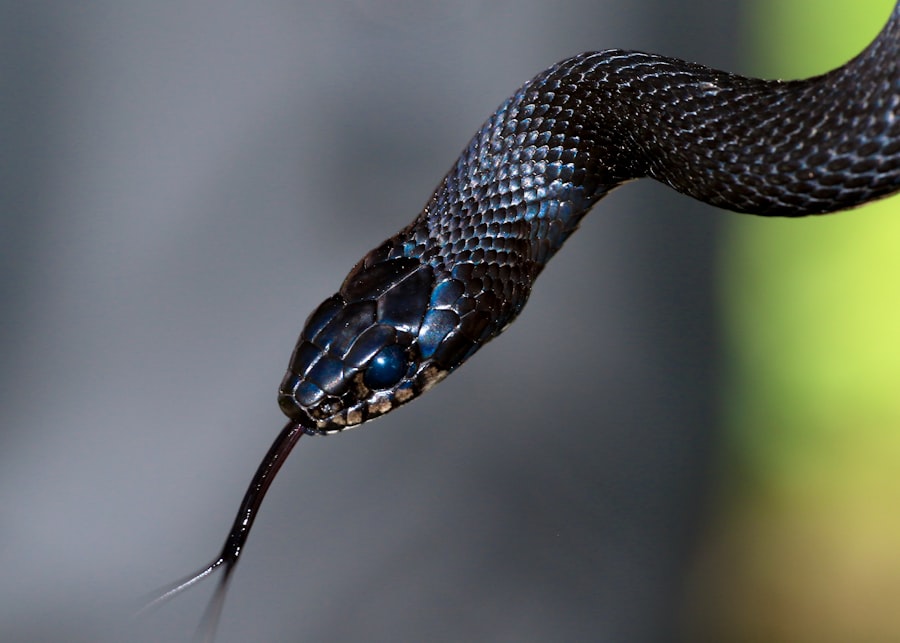The Drake Passage, a narrow stretch of water between the southern tip of South America and Antarctica, is notorious for its unpredictable and often violent seas. This body of water, measuring approximately 600 miles wide, serves as a conduit for the confluence of the Atlantic and Pacific Oceans. The unique geography of the region, combined with the relentless winds that sweep across the Southern Ocean, creates conditions that can turn calm waters into tumultuous waves in a matter of moments.
Mariners have long regarded the Drake Passage as one of the most challenging maritime routes in the world, with its reputation for fierce storms and high swells. Navigating these treacherous waters requires not only skill but also a deep respect for nature’s power. The passage is often characterized by steep waves that can reach heights of 30 feet or more, making it a daunting challenge for even the most seasoned sailors.
The unpredictable weather patterns, which can shift rapidly from sunny skies to raging storms, add an additional layer of complexity to any journey through this region. For those who dare to traverse the Drake Passage, it is essential to be prepared for the unexpected, as the waters can be as unforgiving as they are beautiful.
Key Takeaways
- The Drake Passage is known for its treacherous waters and unpredictable weather, making it a challenging route for sailors and adventurers.
- The “Snake Head” phenomenon refers to the convergence of strong currents and winds in the Drake Passage, creating dangerous conditions for navigation.
- Proper preparation for navigating the Drake Passage includes securing loose items, stowing away personal belongings, and familiarizing oneself with emergency protocols.
- Experienced crew and a knowledgeable captain are crucial for safely navigating the Drake Passage and handling unexpected challenges.
- Safety measures such as wearing a life jacket, attending safety briefings, and knowing emergency protocols are essential for a successful crossing of the Drake Passage.
Understanding the “Snake Head” Phenomenon
One of the most intriguing aspects of the Drake Passage is the “Snake Head” phenomenon, a term used by sailors to describe a specific wave pattern that can occur in these waters. This phenomenon is characterized by a series of large, rolling waves that appear to move in a serpentine manner, creating a visual spectacle that can be both mesmerizing and terrifying. The “Snake Head” waves are often formed by the interaction of strong winds and ocean currents, resulting in a chaotic sea state that can catch even experienced mariners off guard.
Understanding this phenomenon is crucial for anyone planning to navigate the Drake Passage. The “Snake Head” waves can be particularly dangerous, as they can come up suddenly and without warning. Sailors must remain vigilant and be prepared to adjust their course or speed to mitigate the risks associated with these unpredictable waves.
Knowledge of this phenomenon not only enhances safety but also enriches the overall experience of crossing the Drake Passage, as it allows sailors to appreciate the dynamic nature of the ocean.
How to Prepare for Navigating the Drake Passage

Preparation is key when it comes to navigating the Drake Passage. Mariners must equip themselves with both physical and mental tools to face the challenges that lie ahead. This begins with thorough research on weather patterns, sea conditions, and potential hazards in the area.
Understanding the seasonal variations in weather can help sailors choose the best time for their journey, as conditions can vary dramatically throughout the year. Additionally, having access to up-to-date weather forecasts and navigational charts is essential for safe passage. Beyond logistical preparations, mental readiness is equally important.
The psychological demands of navigating such a formidable body of water can be significant. Sailors should engage in training exercises that simulate rough sea conditions, allowing them to practice their skills and build confidence in their abilities. Furthermore, fostering a strong sense of teamwork among crew members can enhance safety and efficiency during the crossing.
By preparing both physically and mentally, sailors can increase their chances of successfully navigating the Drake Passage.
The Importance of Experienced Crew and Captain
| Metrics | Experienced Crew | Experienced Captain |
|---|---|---|
| Accident Rate | Low | Low |
| Efficiency | High | High |
| Response to Emergencies | Quick | Quick |
| Customer Satisfaction | High | High |
The significance of having an experienced crew and captain cannot be overstated when it comes to traversing the Drake Passage. A skilled captain brings not only navigational expertise but also a wealth of knowledge about handling emergencies and adverse conditions. Their ability to make quick decisions in response to changing weather patterns or unexpected challenges is crucial for ensuring the safety of everyone on board.
An experienced captain will also have a deep understanding of the unique characteristics of the Drake Passage, allowing them to anticipate potential hazards and navigate accordingly. Equally important is the role of a well-trained crew. Each member should be familiar with their responsibilities and equipped to handle various situations that may arise during the crossing.
Effective communication among crew members is vital, as it fosters a sense of unity and ensures that everyone is on the same page during critical moments. A cohesive team can work together seamlessly to address challenges, whether they involve adjusting sails in high winds or executing emergency protocols in response to unforeseen circumstances.
Safety Measures and Emergency Protocols
Safety measures and emergency protocols are paramount when navigating the unpredictable waters of the Drake Passage. Mariners must have a comprehensive safety plan in place before embarking on their journey. This includes conducting regular safety drills to ensure that all crew members are familiar with emergency procedures, such as man-overboard scenarios or equipment failures.
Having life jackets, flares, and other safety equipment readily accessible is essential for responding effectively to emergencies. In addition to physical safety measures, maintaining open lines of communication is critical during a crossing. Crew members should be equipped with reliable communication devices to stay connected with each other and with shore-based support if needed.
Establishing clear protocols for reporting issues or emergencies can help ensure that everyone remains informed and prepared to act swiftly if necessary. By prioritizing safety measures and emergency protocols, sailors can navigate the Drake Passage with greater confidence and peace of mind.
Tips for Minimizing Sea Sickness

Sea sickness is a common concern for those embarking on a journey through the Drake Passage, given its notorious reputation for rough seas. However, there are several strategies that sailors can employ to minimize discomfort during their crossing. One effective approach is to choose accommodations wisely; staying in a cabin located near the center of the vessel can help reduce motion sensitivity.
Additionally, maintaining a stable position while on deck—such as facing forward—can alleviate feelings of nausea. Another helpful tip involves dietary considerations. Consuming light meals before and during the journey can help prevent an upset stomach.
Foods that are easy to digest, such as crackers or toast, are often recommended. Staying hydrated is equally important; drinking water regularly can help combat dehydration, which may exacerbate feelings of sea sickness.
By implementing these strategies, sailors can enhance their comfort levels while navigating the challenging waters of the Drake Passage.
Wildlife Encounters in the Drake Passage
The Drake Passage is not only known for its treacherous waters but also for its rich biodiversity. As sailors traverse this remarkable region, they may encounter an array of wildlife that calls these waters home. From majestic whales breaching the surface to playful seals basking on ice floes, the wildlife encounters in the Drake Passage are nothing short of spectacular.
Birdwatchers will also delight in spotting various seabird species, including albatrosses and petrels, which gracefully glide above the waves. These wildlife encounters offer a unique opportunity for sailors to connect with nature in its rawest form. Observing these creatures in their natural habitat serves as a reminder of the importance of preserving marine ecosystems and respecting wildlife.
Many vessels that navigate the Drake Passage incorporate wildlife observation into their itineraries, allowing passengers to appreciate the beauty and diversity of life in this remote region while fostering a sense of stewardship for the environment.
The History and Significance of the Drake Passage
The history of the Drake Passage is steeped in exploration and adventure. Named after Sir Francis Drake, who was one of the first Europeans to navigate these waters in the late 16th century, this passage has long been a focal point for explorers seeking new trade routes and territories. Its strategic location has made it an essential route for maritime trade between Europe and Asia, as well as a gateway for scientific research expeditions to Antarctica.
The significance of the Drake Passage extends beyond its historical context; it plays a vital role in global ocean circulation patterns. The mixing of warm and cold ocean currents within this passage contributes to climate regulation and influences weather patterns across vast regions. Understanding its historical importance helps underscore why this body of water continues to captivate adventurers and researchers alike.
Choosing the Right Vessel for Crossing the Drake Passage
Selecting an appropriate vessel for crossing the Drake Passage is crucial for ensuring safety and comfort during the journey. Mariners must consider factors such as size, stability, and design when choosing a vessel suited for these challenging waters. Larger vessels tend to offer more stability in rough seas, while those designed specifically for polar exploration may provide additional features such as reinforced hulls or ice-strengthened structures.
In addition to size and design considerations, it is essential to evaluate onboard amenities that contribute to passenger comfort during long crossings. Features such as comfortable sleeping quarters, dining facilities, and observation decks can enhance the overall experience while navigating this remarkable region. Ultimately, choosing the right vessel involves balancing safety considerations with comfort needs, ensuring that sailors are well-equipped for their adventure through the Drake Passage.
Weather Patterns and Their Impact on Passage
Weather patterns play a significant role in determining conditions within the Drake Passage. The region experiences frequent changes in weather due to its geographical location and proximity to both polar regions and temperate zones. Sailors must remain vigilant about monitoring weather forecasts leading up to their journey, as conditions can shift rapidly from calm seas to stormy weather within hours.
Understanding how different weather patterns impact navigation is essential for safe passage through this area. For instance, strong winds from the west can create steep waves that pose challenges for vessels attempting to cross from south to north or vice versa. By being aware of prevailing weather trends and potential storm systems, sailors can make informed decisions about when to embark on their journey or adjust their course accordingly.
The Thrill and Adventure of Crossing the Drake Passage
Despite its challenges, crossing the Drake Passage offers an unparalleled sense of adventure that draws countless explorers each year. The thrill of navigating through one of nature’s most formidable environments creates lasting memories for those who undertake this journey. The dramatic landscapes—ranging from towering icebergs to rugged coastlines—provide breathtaking views that captivate travelers’ imaginations.
Moreover, successfully navigating these treacherous waters instills a profound sense of accomplishment among sailors. The camaraderie built among crew members during challenging conditions fosters bonds that last long after they return home.
The Drake Passage is a fascinating region known for its turbulent waters and unique wildlife, including the elusive snake head fish. For those interested in exploring more about the geographical and ecological significance of this area, a related article can be found on MyGeoQuest. This article delves into the diverse marine life and the challenging conditions of the Drake Passage, offering insights into why this region is a hotspot for scientific research. To learn more, you can visit the article on MyGeoQuest’s sample page.
WATCH NOW! Drake Passage: Earth’s Deadliest Waters Revealed
FAQs
What is the Drake Passage?
The Drake Passage is a body of water located between the southern tip of South America and the northern tip of the Antarctic Peninsula. It is known for its rough seas and strong winds, making it a challenging area for navigation.
What is a snake head?
A snake head is a type of fish belonging to the family Channidae. They are known for their elongated body, large mouth, and sharp teeth. Snake heads are predatory fish and are capable of breathing air, allowing them to survive in low-oxygen environments.
Is there a species called the “Drake Passage snake head”?
There is no known species of fish called the “Drake Passage snake head.” It is possible that the term “Drake Passage snake head” may refer to a hypothetical or fictional species, or it could be a misnomer.
What kind of wildlife is found in the Drake Passage?
The Drake Passage is home to a variety of marine wildlife, including seabirds, seals, and whales. It is also known for its diverse fish populations, including species such as Antarctic toothfish and krill.
Are snake heads found in the waters of the Drake Passage?
There is no evidence to suggest that snake heads are found in the waters of the Drake Passage. Snake heads are typically found in freshwater habitats in parts of Asia, Africa, and the Americas, and are not known to inhabit the cold, marine environment of the Drake Passage.
